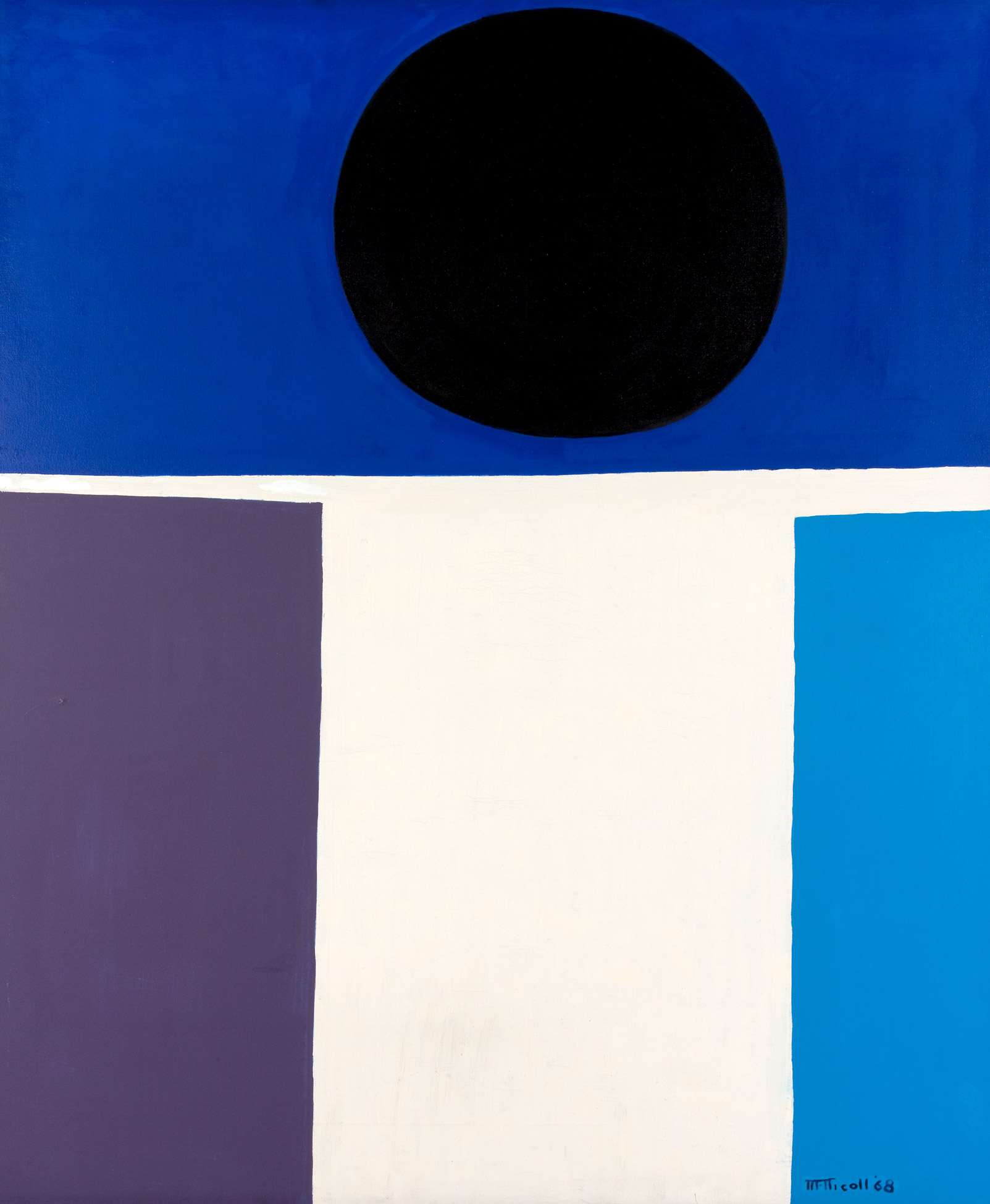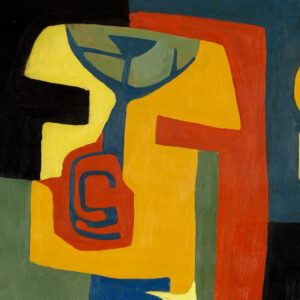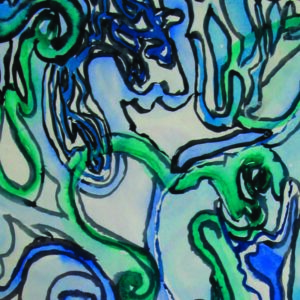January ’68 1968

Marion Nicoll, January ‘68, 1968
Oil on canvas, 137.2 x 114.3 cm
Alberta Foundation for the Arts, Edmonton
In January ’68, a cool palette of two blues, purple, and black is contrasted with a large white central area. The figure-ground and light-dark relationships are suggestive of an outstretched torso set in a barren landscape, with the black circular form at once a head or a moon at night. The composition is perhaps a symbolic metaphor for Marion Nicoll’s aching body in Alberta’s cold January, which exacerbated her difficulties from her advancing arthritis.
In 1968, Nicoll made three new abstractions that were her aesthetic responses to each month of the winter; January ’68 was the first of them.1 Despite her physical discomfort, she created one of her most important late-career paintings, a work that garnered national and international interest. To her friend Janet Mitchell (1912–1998) she explained the impact of the weather on her health at the time: “We have had ten days of chill, so naturally I ached. Now it is 0 degrees [-18 Celsius] and the wind is blowing, the snow almost parallel to the ground. The birch [trees] are thrashing around….I’m wearing grey sweat trousers (for men when they are exercising) with socks, high necked long-sleeved green sweater and a muumuu over the whole mess.”2 By March, Nicoll was in hospital and was not released until mid-May.
-
Marion Nicoll, Studies for January ’68, Sketchbook #3, c.1968
Graphite on paper, 21.5 x 14 cm
Glenbow Archives, Calgary -
Marion Nicoll, January ’68, 1968
Woodcut on paper, 42 x 31 cm
City of Calgary Public Art Collection
In the spring, between hospital and studio, Nicoll finished January ’68. Two studies and calculations for enlargement show her planning process, which she explained “sometimes would take a year.”3 It was completed just in time for inclusion in William Seitz’s seven-week studio tour of Canada. A known curator in postwar abstraction, he was then director of the Rose Art Museum, Brandeis University, Waltham, Massachusetts, and he had been appointed guest curator for the National Gallery of Canada’s Seventh Biennial Exhibition of Canadian Painting.4 He chose Nicoll as one of only seven women of the seventy-one artists shown, recognizing the “philosophical and poetic nourishment” offered by her work.5 January ’68 was also the choice of artist-educator William Townsend (1909–1973) for a special edition of Canadian Art Today in Studio International, which introduced Canadian contemporary art to an English public.6
Nicoll developed January ’68 into two more projects: her 1969 holiday greeting card to be shared with friends and family; and one of her largest print editions in the woodcut process. In 1973, January ’68 found its final home in a provincial public art collection when it was purchased by the Alberta Foundation for the Arts.

 About the Author
About the Author
 More Online Art Books
More Online Art Books
 Acknowledgements
Acknowledgements